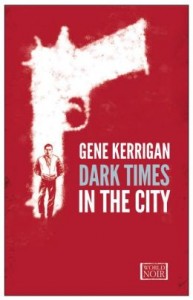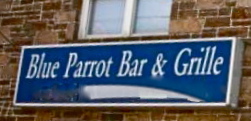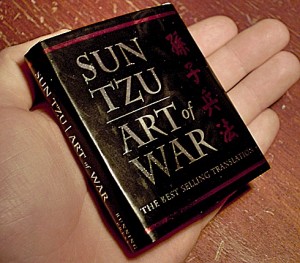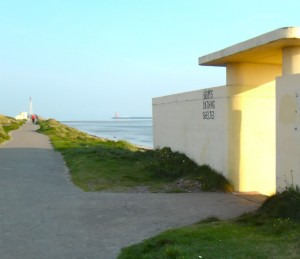Note: Gene Kerrigan’s last novel, The Rage, was winner of the Crime Writers Association Golden Dagger Award for Best Crime Novel of 2012. This newly released US edition of Dark Times in the City was nominated for the same award in 2009, when it was first published in the UK.
“Everyone’s got an angle. Half this city was built on crooked land deals and politicians selling bent planning permission. How much of the building trade operates off the books? How many of the big family businesses were built on bribery, extortion and tax evasion? All those big-time tax frauds the banks organized – you see any bankers in jail?…I steal thousands, they steal millions.”—Lar Mackendrick, mob boss
Image may be NSFW.
Clik here to view. In his fourth dark crime novel to be published by Europa Editions, Irish author Gene Kerrigan continues his string of successful mysteries depicting the hopelessness among those in contemporary Dublin whose chances to escape their dreary lives vanished when the Irish economic “bubble” burst. Now, as Kerrigan depicts it, a successful life for those living on the fringes consists of making compromises with crooks of all types – developers, real estate moguls, extortionists, drug dealers, hired thugs, organized crime, and even the police. Life is uncertain; the ability of good people to avoid being swept up in neighborhood crime is limited; and their goals in life are mainly to survive from day to day. Danny Callahan is having a particularly hard time. Convicted ten years ago of killing mob leader Big Brendan Tucker in a premeditated murder (later reduced to manslaughter as the jury’s way of saying the victim “was a scumbag anyway”), Danny has been out of prison for only seven months, staying clean and working as a driver for his friend Novak, who runs a pub, a transport firm, and a specialty bread store. Divorced by the love of his life while he was in prison, Danny is alone, making do until he can figure out a future direction for his life.
In his fourth dark crime novel to be published by Europa Editions, Irish author Gene Kerrigan continues his string of successful mysteries depicting the hopelessness among those in contemporary Dublin whose chances to escape their dreary lives vanished when the Irish economic “bubble” burst. Now, as Kerrigan depicts it, a successful life for those living on the fringes consists of making compromises with crooks of all types – developers, real estate moguls, extortionists, drug dealers, hired thugs, organized crime, and even the police. Life is uncertain; the ability of good people to avoid being swept up in neighborhood crime is limited; and their goals in life are mainly to survive from day to day. Danny Callahan is having a particularly hard time. Convicted ten years ago of killing mob leader Big Brendan Tucker in a premeditated murder (later reduced to manslaughter as the jury’s way of saying the victim “was a scumbag anyway”), Danny has been out of prison for only seven months, staying clean and working as a driver for his friend Novak, who runs a pub, a transport firm, and a specialty bread store. Divorced by the love of his life while he was in prison, Danny is alone, making do until he can figure out a future direction for his life.
Clik here to view.

Author photo by Derek Spears
While Callahan is killing time one evening at Novak’s pub, the Blue Parrot, two armed assassins wearing motorcycle helmets attack Walter Bennett, a man Callahan knows slightly from his time in prison. Small, middle-aged, and grey-haired, Bennett is rightfully terrified, and when the assassin’s gun misfires only four feet from Walter’s head, Bennett begs Danny Callahan to help him. Instinctively, Callahan hits the assassin with a barstool, saving the life of Walter Bennett but making a permanent enemy of the mob boss who ordered the hit. As Callahan sees it, “Walter couldn’t help being a fool, but [I] ought to have known better. If heavies with guns wanted Walter dead, for whatever reason, he was going to die. Interfering in that kind of squabble was pointless.” Walter Bennett had been acting as a police informant, and he got caught by the mob.
Image may be NSFW.
Clik here to view. From this point on, Kerrigan focuses on this initial event as a symptom of the much larger crime scene in Dublin, and in Callahan’s neighborhood of Glencara, in particular. Though four other public gang executions have occurred in Dublin in the past month, with drugs thought to be at the heart of the problem, Walter’s crime of informing is much more serious, and Danny Callahan is no longer going to be able to remain anonymous. Lar Mackendrick, one of the two major mob bosses, who has ordered the hit on Walter, is now looking for Callahan, wondering about his involvement with the police and how much he knows. The police also want Callahan for questioning about events in the pub, and even worse, the other major mob boss, Frank Turner, brother of the man Callahan killed, wants Callahan dead for his past sins. The two foiled assassins, Karl Prowse and Robbie Nugent, working their first job for Mackendrick, are determined to do whatever is necessary to get back into the good graces of Lar Mackendrick, and they are ready to kill Callahan for his interference. Hints of a gang war are growing stronger throughout the city.
From this point on, Kerrigan focuses on this initial event as a symptom of the much larger crime scene in Dublin, and in Callahan’s neighborhood of Glencara, in particular. Though four other public gang executions have occurred in Dublin in the past month, with drugs thought to be at the heart of the problem, Walter’s crime of informing is much more serious, and Danny Callahan is no longer going to be able to remain anonymous. Lar Mackendrick, one of the two major mob bosses, who has ordered the hit on Walter, is now looking for Callahan, wondering about his involvement with the police and how much he knows. The police also want Callahan for questioning about events in the pub, and even worse, the other major mob boss, Frank Turner, brother of the man Callahan killed, wants Callahan dead for his past sins. The two foiled assassins, Karl Prowse and Robbie Nugent, working their first job for Mackendrick, are determined to do whatever is necessary to get back into the good graces of Lar Mackendrick, and they are ready to kill Callahan for his interference. Hints of a gang war are growing stronger throughout the city.
Clik here to view.

Sun Tsu's The Art of War, begun in 512 B.C., a favorite of Lar Mackendrick
What makes Kerrigan’s noir mysteries particularly memorable is his focus on the human side of his characters, even in the midst of horrific violence. Some characters, even assassins, are shown to be caring and personable in their private lives, the beatings and killings saved for their jobs with organized crime. Lar Mackendrick, for example, is defensive about the fact that though he leads a big gang, he is not the “brain” that his dead brother Big Brendan was, and whenever he needs ideas on how to act as a leader, he reads Sun Tsu’s The Art of War, begun by Sun Tsu in 512 B.C. as a guide to the strategies of war. His relationship with his wife Mary is caring and sensitive. Karl Prowse, hired by Lar Mackendrick to be the killer of Walter Bennett, is loving toward his wife the morning after he fails in his assassination attempt, and when his unhappy two-year-old daughter needs attention, he “hunches down with her, playing ‘A Sailor Went to Sea-Sea-Sea’ until she starts laughing,” before going out to find a newspaper about the abortive killing. Novak, owner of the pub and other businesses, and apparently not part of the criminal scene, describes his Polish background, his admiration for his father, and his experience in thwarting an attempt by thugs to force him to pay protection money.
Clik here to view.

In a great irony, Lar Mackendrick and Frank Tucker, two gang leaders, meet to discuss the future in the Lord Mayors' Lounge of the Shelbourne Hotel, noted for its afternoon teas.
Kerrigan’s clean and precise prose style allows the action to move quickly and clearly, but at the same time he shows his characters’ love of nature and the world around them. In an opening scene, a frightened old man tries to protect his grandson from a gang when the nineteen-year-old grandson does not have the money to repay a debt. Though the grandson’s situation is truly dire, the old man still takes the time to notice his surroundings on a hilltop: “From up here in the Dublin mountains, the lights of the city glowed like countless grains of luminous sand strewn carelessly in a shallow bowl. There were random patterns in the glitter – silvery lights bunched together, clusters of tall buildings, cranes topped by red hazard lights…the air as sharp as broken ice.”
Clik here to view.

Lar Mackendrick and Declan Roeper meet at the Men's Shelter along the Clontarf Promenade to discuss a business deal.
Despite the novel’s violence and the inevitability of its outcomes, lyrical passages like this one keep the reader hoping for possibly good outcomes even as his main characters are gasping their last breaths. Kerrigan’s women, with no real lives or influence of their own, are insignificant here, lacking any ability to make changes in the overly violent male culture which dominates their lives. The darkness never abates.
ALSO by Gene Kerrigan: LITTLE CRIMINALS, MIDNIGHT CHOIR and THE RAGE
Photos, in order: Ths author’s photo by Derek Speirs appears on http://www.npr.org/
The miniature edition of The Art of War by Sun Tsu, published by Running Press in 2003, was translated by Ralph D. Sawyer in 1994. See http://en.wikipedia.org/
The Lord Mayor’s Lounge of the Shelbourne Hotel is famous for its afternoon teas: http://www.marriott.co.uk/ It is where Lar Mackendrick met with Frank Tucker to discuss the future.
The men’s shelter along the Clontarf Promenade is where Lar Mackendrick meets with Declan Roeper to discuss a business deal. http://artdecodublin.blogspot.com/
ARC: Europa Editions